After an uncomfortably close confidence vote for the Prime Minister on Monday, Boris Johnson’s premiership still hobbles along. But for how much longer? It seems the PM’s latest strategy is to find favour with his party again by promising bread-and-butter Tory policies: mainly tax cuts.
Speaking to Tory MPs just hours before this week’s confidence vote, Johnson was making all the right noises: to boost the economy post-pandemic, he said, it was time to ‘drive supply side reform on Conservative principles and to cut taxes and to drive investment in the UK.’ Since the vote, Johnson has continued to harp on about cutting taxes, reportedly telling the Cabinet that cuts were coming down the track. A statement on economic growth is also expected from Johnson and his Chancellor Rishi Sunak next week – though details are limited, and the emphasis from No10 is that tax cuts will come ‘down the line’, not right away.
The problem for Johnson is that his government hasn’t simply been slow to slash taxes; it’s been proactively raising taxes for well over a year now. Johnson has overseen the tax burden reaching its highest level in 71 years. On the current trajectory, this will rise to a 77-year-high by 2025-26.
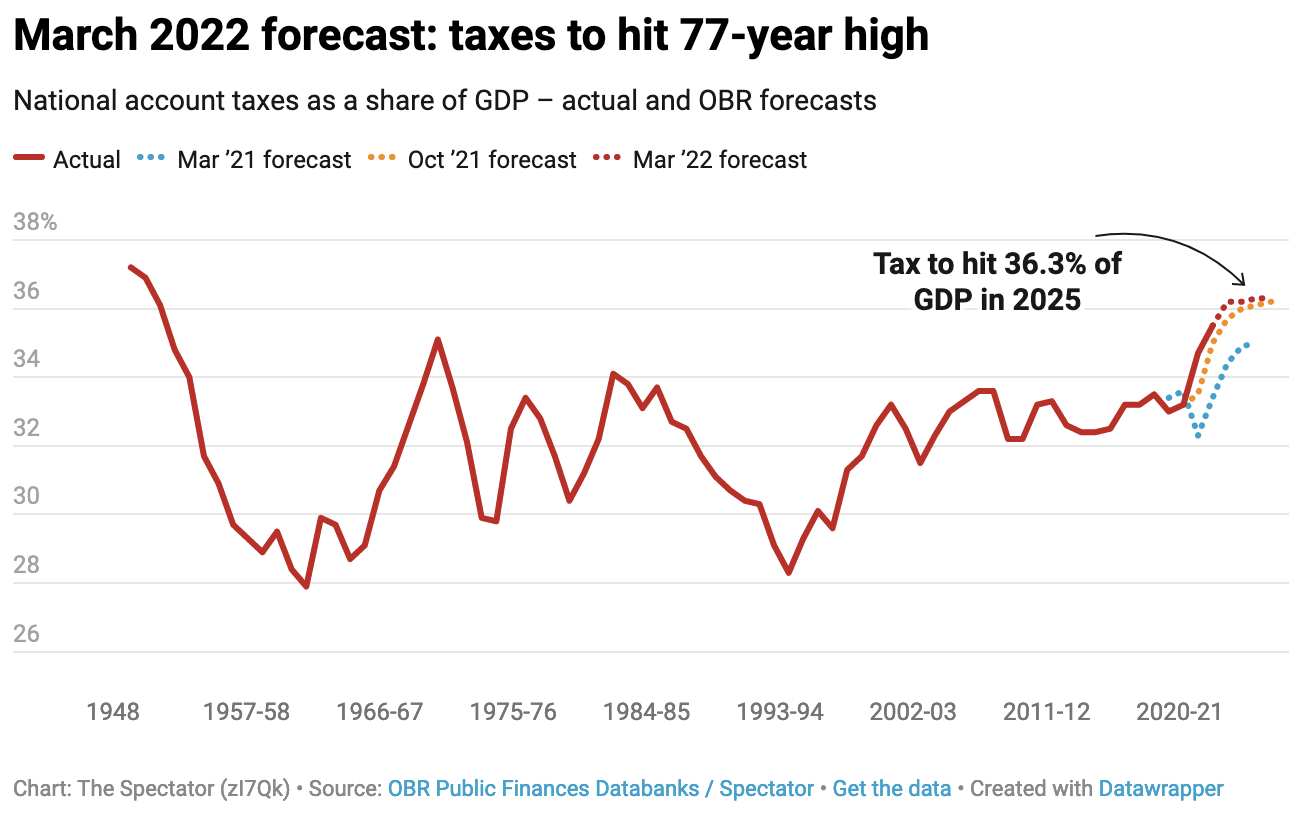
The Prime Minister can make the case, as his Chancellor has been doing since his March Budget last year, that some of these tax hikes have been necessary to deal with the economic fallout from the pandemic; especially to protect the public finances from inflation (i.e. higher debt interest payments) which have been rising dramatically. But it’s well known that the more recent tax hikes, particularly the National Insurance levy introduced in April, were brought in to cover the Prime Minister’s spending habits: in this case, his desire to cover the costs of social care for the asset-wealthy, to protect them from having to sell their homes to pay for care.
Spending cuts have more or less been off-limits since Johnson entered Downing Street. He’s been afraid to be pegged with the label of ‘austerity’ and so prefers to borrow – and tax – over trimming the size of the state.
Where has all this got us? Today the puts it into perspective, marking 8th June as ‘Tax Freedom Day’, which comes a week later than last year due to recent tax grabs. With 43.29 per cent of net national income now going to the Treasury, it takes 159 days for Brits to stop working for the state and start working for themselves. It’s the latest Tax Freedom Day since official records began in 1995.
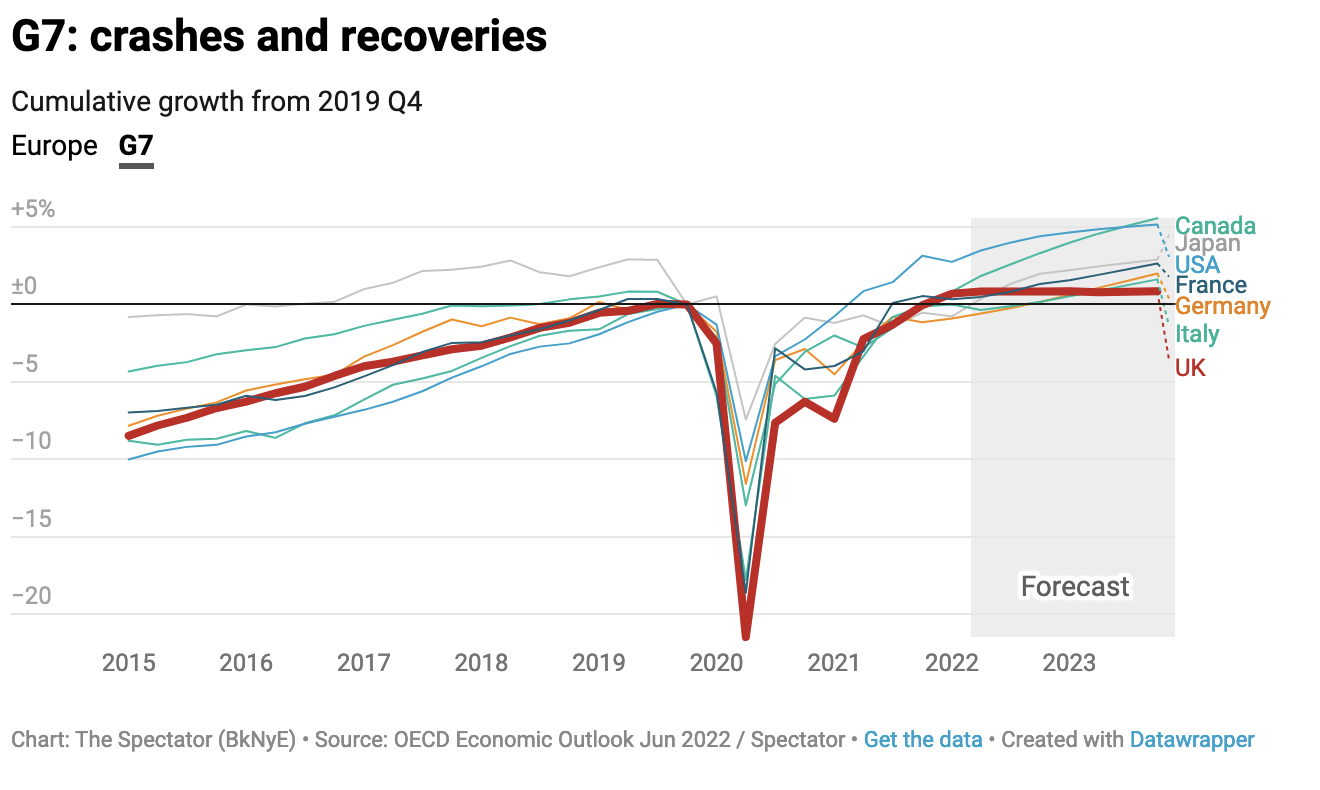
This kind of financial burden doesn’t just cause short-term pain by fuelling the cost-of-living crunch; it has serious ramifications for Britain’s economic future too. Alongside Tax Freedom Day comes a warning from OECD the that the UK is set to experience the worst economic growth amongst developed nations next year, as the economy stagnates due to the ‘rising cost of living’ and ‘depressed demand.’ As well, the OECD forecasts that when inflation does fall, it won’t be back down to record low levels, but could still be close to 5 per cent by the end of 2023.
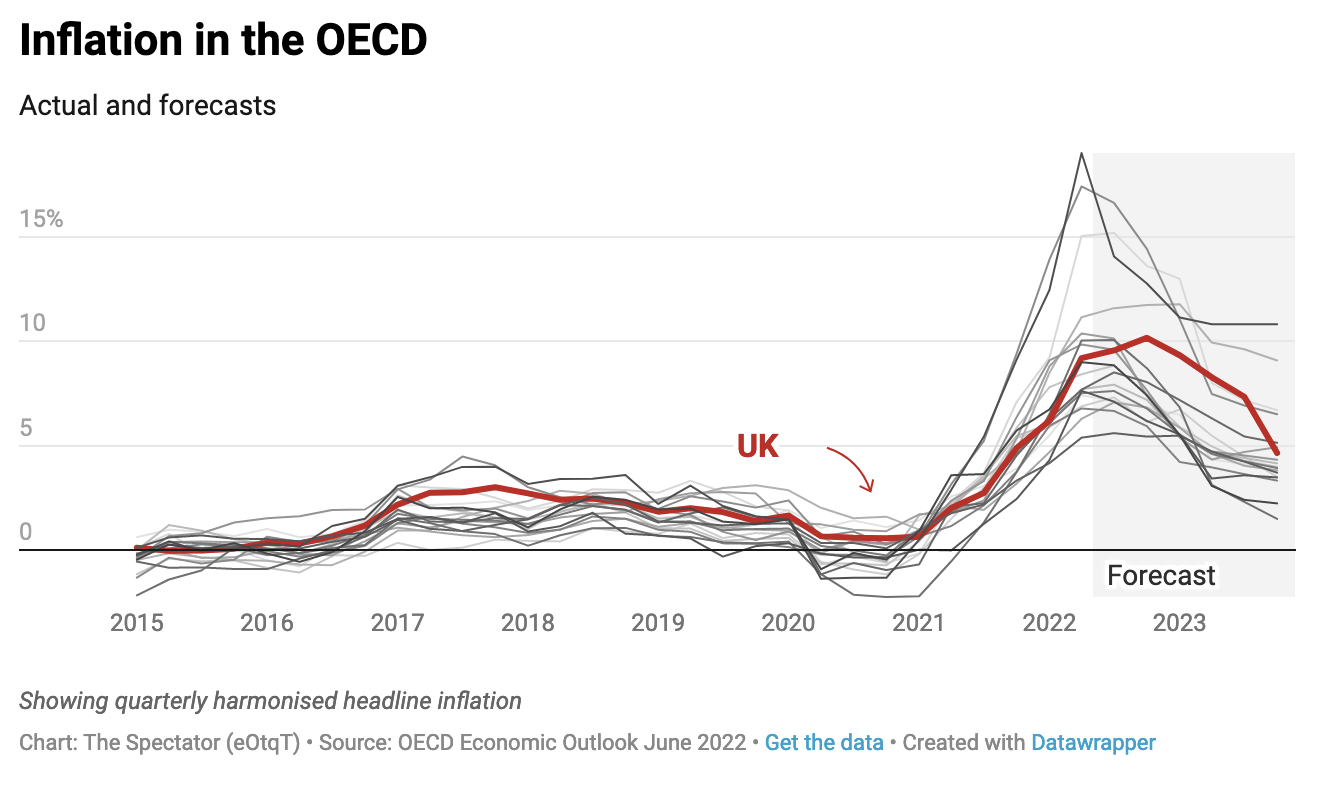
If forecasts are even somewhat reflected in reality, the PM will have very little choice but to start making hard decisions about priorities and where savings can be made. That’s going to require action, not simply making the right sounds around the Cabinet table. This is where the pressure point lies: for quite a while now, Johnson has managed to get away with branding his party the ‘low tax’ party while simultaneously raising taxes. But it seems his own party may not let him get away with it anymore.
Still, if Johnson wants tax cuts he’s going to have to budge, either on the size of the state or on his trepidation to bring in serious supply-side reforms.
Got something to add? Join the discussion and comment below.
Get 10 issues for just $10
Subscribe to The Spectator Australia today for the next 10 magazine issues, plus full online access, for just $10.


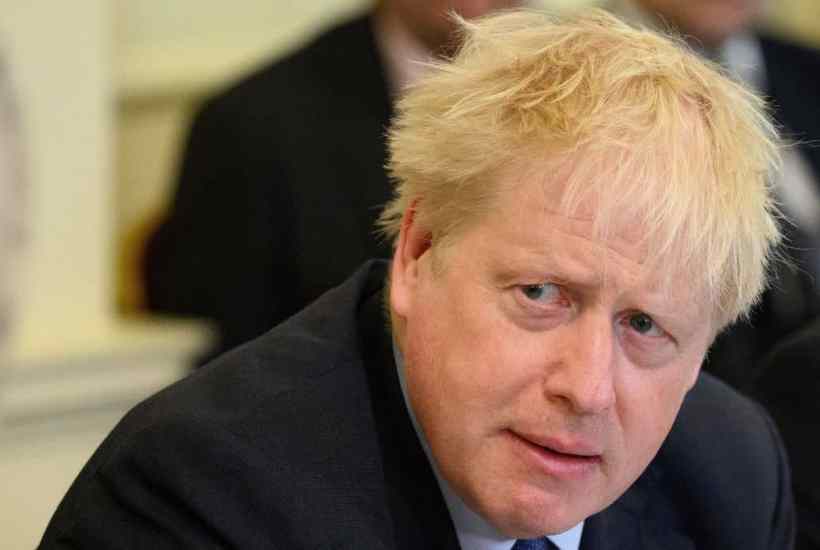
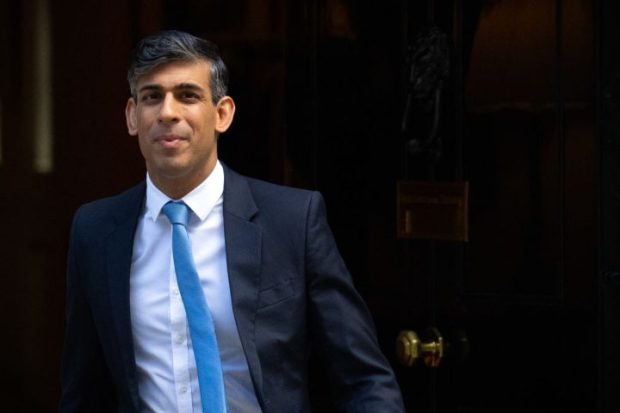
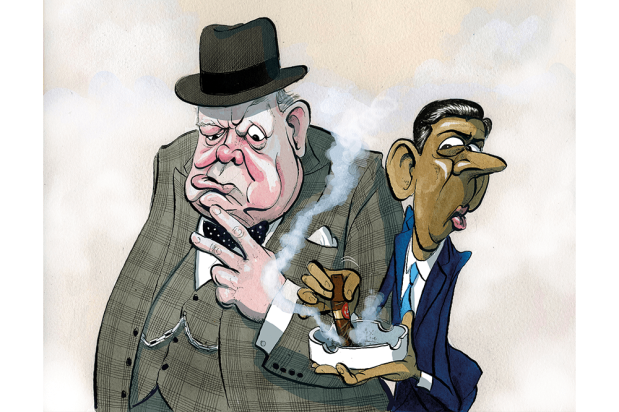
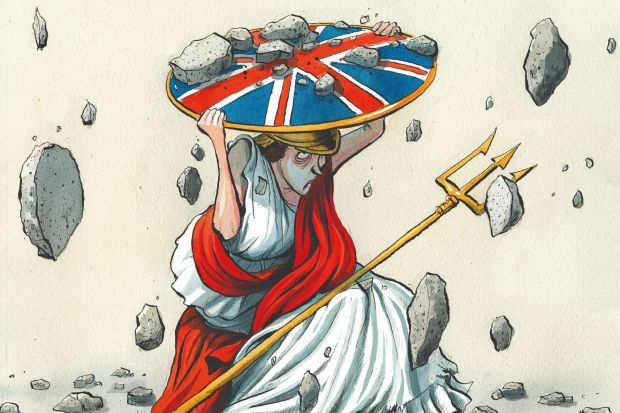
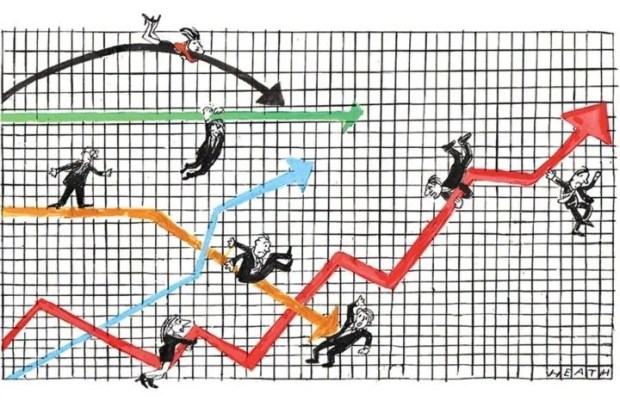














Comments
Don't miss out
Join the conversation with other Spectator Australia readers. Subscribe to leave a comment.
SUBSCRIBEAlready a subscriber? Log in